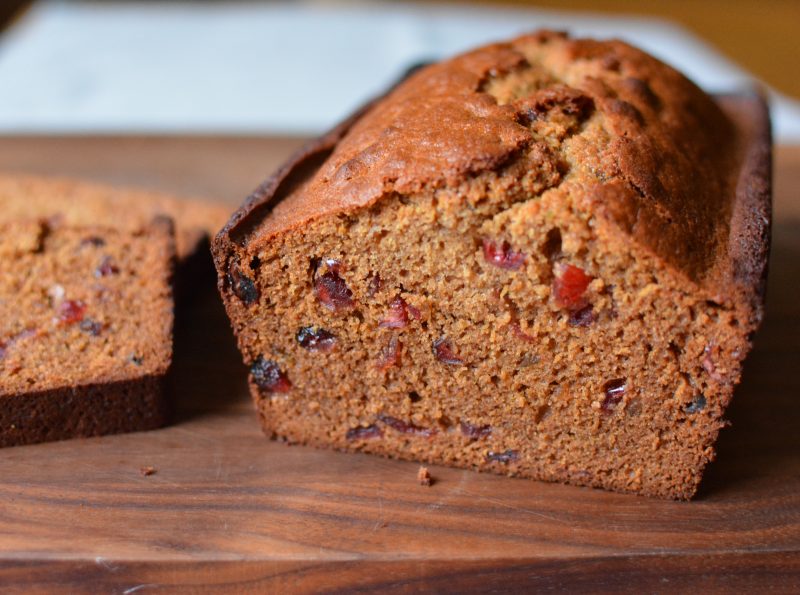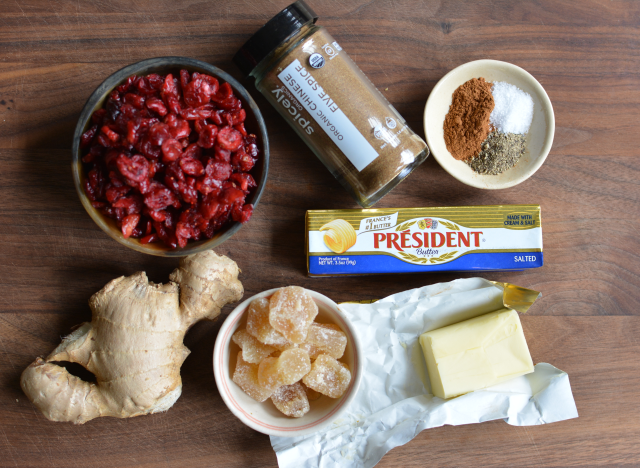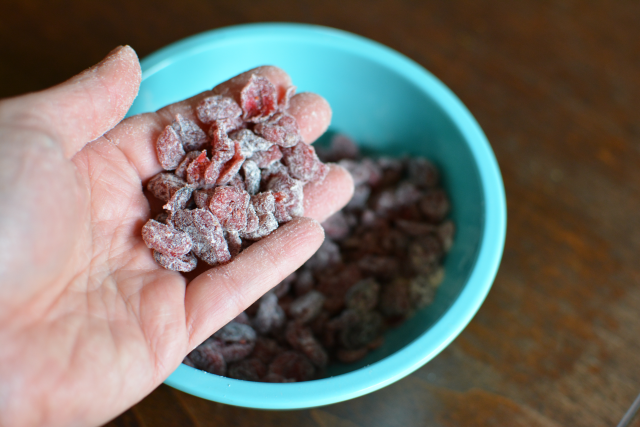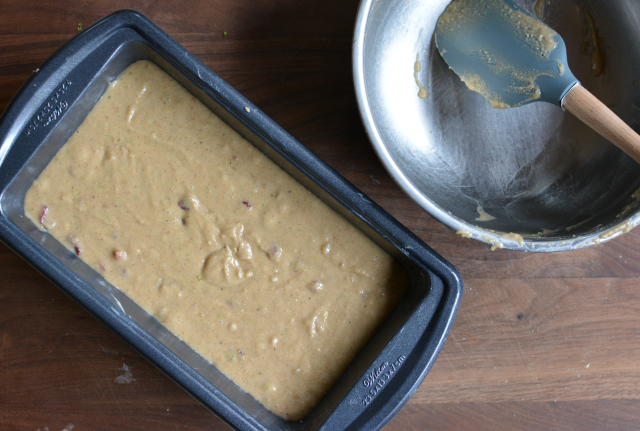Today was a double win in the kitchen. It’s my husband’s last day of teaching for the year and I wanted to bake him a celebratory sweet treat. I was also wanting to experiment with a holiday cake that would keep well as a gift to my family and friends. My family is partial to fruitcake and yule logs (buche de Noel). We’ve made many of them and I’ve posted recipes here and here.
As these things simmered in the back of my mind, fate intervened (as it often does) via an email. Christopher Kimball sent out his Milk Street magazine e-newsletter, which opened with notes from his recent Thailand trip and included a recipe for pain d’épice, a French spice cake. I looked at the recipe for the cake-cum-bread (think a forceful but not overly sweet gingerbread) and realized that if the Europeans had not ventured to Asia, they would not have obtained peppercorns, mace, nutmeg, cinnamon, ginger, and the like. The classic French cake benefited big time from the spice route.
Additionally, as I’ve been fielding media requests about the history of pho, much of my time has been spent discussing the collision between Vietnamese, Chinese, and French cultures. So what may a Viet cook do to the cake recipe? He/she could blend the spices as the French did, or reach for Chinese five-spice, a blend of cassia cinnamon, star anise, fennel, pepper, ginger and potentially other spices too. (Note that when making liver pate, instead of French quatre épice (four spice blend), Viet cooks use Chinese five-spice.) There's plenty of local honey in Vietnam, ginger in fresh and preserved form, and black pepper. People candy and dry fruits so whatever that's around may be thrown into the batter.
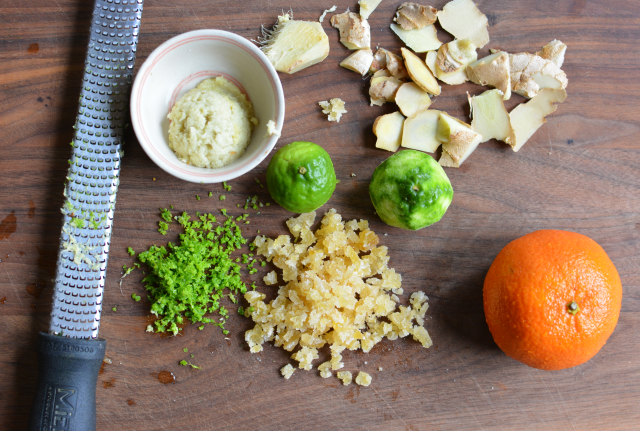
So what would happen if I tweaked the Milk Street pain d’épice recipe by subbing Chinese five-spice? Choosing the spice blend is important and my current favorite blend is made by Spicely and sold at regular supermarkets. I used Phu Quoc pepper but Telicherry would be fine, so long as the pepper is freshly ground (I have an old coffee grinder dedicated to spice grinding). Also, citrus zest plays a role in the recipe so I went total Southeast Asia by grating the peel of a couple kaffir (makrut) limes plucked from our tree last week. You could use any kind of citrus, or even combine a couple kinds. Make sure to scrub them beforehand, if there’s a waxy coating present.
For holiday cheer, I threw in a cup of dried cranberries, whose slight bitterness pairs well with the lime and ginger. You could use dried cherries or raisins, or chopped candied orange peels (my favorite recipe is in Into the Vietnamese Kitchen on page 294). The cake came together pretty quickly. It bakes for a while at a moderately-low heat.
The cake cooled in after a good 1 hour (our house is cold-ish these days) and cut up slices to eat as an afternoon snack. It was perfumed with spices, punctuated by a bit of heat, and there was a slightly crunchy crust all around, due to the buttered pan, Milk Street explained. It was delicious.
My husband came home somewhat tired from meetings and giving his last 2016 lecture. He perked up at the smell and sight of the cake. I think he’ll be seeing this cake again for years to come.
I enjoy strong-flavored honey and used a dark amber one for the cake. That’s why it looks nearly burnt but I assure you it wasn’t; it may have darkened less if baked in the middle of the oven. Anyway, if you prefer a lighter finish, use a light honey for a more golden result.
David Leibovitz has a pain d’épice recipe on his website that blends regular flour with rye flour for a heartier result. There are many variations on this cake and it ages well, too. The honey and ginger ensures that for two weeks, Milk Street says. Ahem, that means you could bake it in small tins as holiday gifts. I wasn't expecting divine intervention today but am sure glad it arrived.
* * * * *
French-Vietnamese Spice Cake
Yields: 8 to 10 serving
Ingredients
- 4 ounces (1 stick) salted butter plus 1 teaspoon
- 1 cup honey
- 2 to 3 teaspoons finely grated citrus zest (lime, orange, or tangerine)
- 1 tablespoon finely grated, peeled fresh ginger
- 2 tablespoons finely chopped crystallized ginger
- ½ cup whole milk
- 2 large eggs
- 1 ¾ (8.75 oz) cups all-purpose flour, bleached or unbleached
- 1 cup (3.5 oz) almond flour
- ¼ teaspoon fine sea salt, or ½ teaspoon kosher salt
- ½ teaspoon pepper, freshly ground preferred
- 1 teaspoon baking soda
- 1 ½ teaspoons ground cinnamon
- 1 ½ teaspoons Chinese five-spice powder, such as Spicely brand
- 1 cup dried cranberries
Instructions
- Place the oven rack in the upper-middle position and preheat the oven to 325F. Melt the butter in the microwave oven (use 20-second blasts on high). Use about 1 teaspoon of the butter to coat the bottom and sides of a 9-by-5-inch loaf pan; set aside.
- In a medium bowl, whisk together the remaining ½ cup melted butter with the honey to create a caramel-colored, smooth mixture. Add the zest, fresh ginger, crystallized ginger, milk, and eggs. Whisk until well combined.
- In another bowl, whisk or stir together the two kinds of flours, salt, pepper, baking soda, cinnamon, and five spice powder. Take 1 tablespoon of the mixture to coat the cranberries.
- Add the cranberries and flour mixture to the wet ingredients. Fold until dry flour is no longer visible. Transfer the batter to the prepared pan. Slide into the oven and bake for 65 to 70 minutes, until firm (touch to test) and a thin bamboo skewer or toothpick inserted in the middle comes out with a few tiny crumbs or a bit of moisture attached.
- Cool on a rack for 10 minutes before unmolding. Let cool completely, 1 to 2 hours, before slicing with a bread knife and serving.
Adapted from Milk Street’s pain d’épice recipe.
Related posts:













